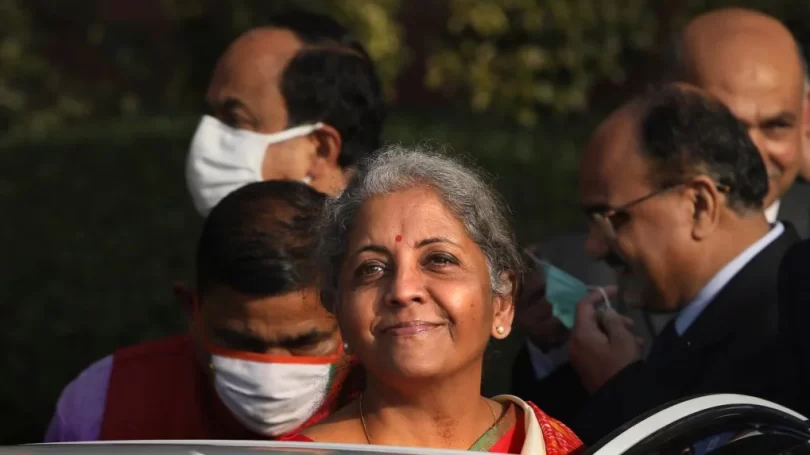2021 can be called the year of resilience with a phenomenal run in the stock market, economy finding its legs of gradual recovery, businesses normalising activities, record number of IPOs and a massive vaccination drive to fight the pandemic. Much of this resilience, in the midst of serious COVID-19 led challenges, can be attributed to the proactive steps from the government, RBI, policymakers, as well as the hardworking citizens of this country. These proactive steps and hard work have now set the stage for India towards a long-term bull market.
Intermittent market corrections will be there, but that is also to remind that volatility is inherent to financial asset classes, while also providing opportunities to build long term portfolio. The growth potential of the Indian economy remains intact and gives confidence for long-term conviction to bet on India.
The pandemic has brought many lessons for both regulators and the government in identifying the areas of focus that could create employment, improve economic activities, make India self-sufficient, focus on rural economic upliftment in the form of agriculture growth and implement ways of increasing rural income through social spending. All these points are focusing on India moving towards a new trajectory in the next decade. In addition to domestic developments, the China factor is caught with its own impact on the way global industries look at emerging markets and India seems to be gaining more ground from global investors as one of the bigger investment destinations.
The very fact that in the last few years the FDI investment has crossed net of $50 billion as against the normal run rate of $40 billion, is an indication of how FDI investment in India is going to contribute significantly as a source of financing. While the FIIs’ flow will remain volatile and it could be more opportunistic, however the longer-term FIIs’ flow in India would probably be increased significantly on the back of rating index for India going up in MSCI.
The Indian sovereign bonds coming in the foreign Index has increased the traction towards the Indian bond market. Hence the environment in general is more conducive for pick up in investments in India from the economic point of view. Emerging markets including India have witnessed net FII outflows during the year 2021. India has also seen close to Rs 70,000 crore of outflows, but it was netted off by the increased retail and domestic institutional participation in the equity market, in addition to the supportive Government and Central Bank policy framework. We have also seen a gradual pick up in GST collections, in fact month on month numbers are showing an upward trend.
New schemes such as PLI to encourage manufacturing in India got stitched during the year to kick start these activities sooner than later. Infrastructure sector witnessed renewed focus through Government spending, benefitting many other allied sectors. We have seen a shift in consciousness with a focus on ESG to bring in sustainability for the long term. Utilities sector like Power have also witnessed a significant revival. Many companies have seen improvement in balance sheet due to business recovery, leading to improvement in corporate profitability. In fact, most of the companies have reduced the dependency on debt in funding their growth. This is a significant fundamental improvement in the Indian corporate balance sheets, therefore, improving return ratio to shareholders.
In the last few years financial markets have improved quite significantly in terms of deepening its presence across different parts of the country. Awareness about different financial products, whether it is a loan product or investment product have been growing quite significantly. The availability of money for every borrower has also been created by way of small finance companies, small finance banks and micro finance companies among other things. In addition to this, the entire payment mechanism of the country has undergone a tectonic shift.
In fact, during the pandemic, it has been proved again and again that there has been a significant increase in transactions through digital platforms. Along with the awareness for digital platforms, mobile penetration in the country has also been rising significantly. All these factors have contributed towards making India a progressive country in adapting technological change, therefore leading to greater opportunities for more start-ups to come from any part of the country in the years to come.
Entrepreneurial nature of GenZ is also rising as it is happening in the US market. Between employment and entrepreneurship, the choice towards entrepreneurship seems to be rising amongst youngsters. Therefore, the change of such mindset among youngsters, will be instrumental to lift India to next level and hence I feel very strongly that India is set for a long term bull market.
Asset management industry has been gaining popularity in channelising the resources of public at large into the capital market. In fact, increased participation in equity market in 2021 is an indicator of the growth potential of AMC industry to reach the next level. The increased participation of both investors as well as newer players will expand the scope of the industry and widen the investor base to reach out to.
While the near record participation in capital markets in the last two years will result in its evolution and maturity, one can also expect some migration from direct equity to mutual funds as the size of managing individual stock portfolios become larger, combined with the experience of market volatility. Some of the new and young investors who have not navigated different market cycles may realise the importance of asset allocation and diversification going ahead, which mutual funds offer and that too with investments in small tranches systematically over a period of time.
Structurally the interest rate in India is going to stay in the mid-single digit rates. This will make savers look for alternative investment opportunities and therefore mutual funds through both equity and fixed income schemes will play bigger role in this context. Notwithstanding periodic volatility, which is part and parcel of markets, investors should use every opportunity to build a long-term portfolio with asset allocation as the core strategy.
All these factors will lead to taking the Indian economy to more than 5 trillion in size, supported by conducive policy frameworks, increase in corporate earnings, new age businesses picking up significantly and increased contribution coming from Bharat as a nation and thereby emerging as a global leader. The positive developments of 2021 should play a bigger role in the years to come and result in better years ahead. Despite the fear of new variants and their effects, it appears economic recovery will be faster, and we can expect a reversal to normalcy in the year 2022. All eyes will be on the Union Budget. One would expect the focus to remain in fuelling economic activity and support to employment generating industries.
—A Balasubramanian is the Managing Director & Chief Executive Officer of Aditya Birla Sun Life AMC Ltd. Views expressed are personal







